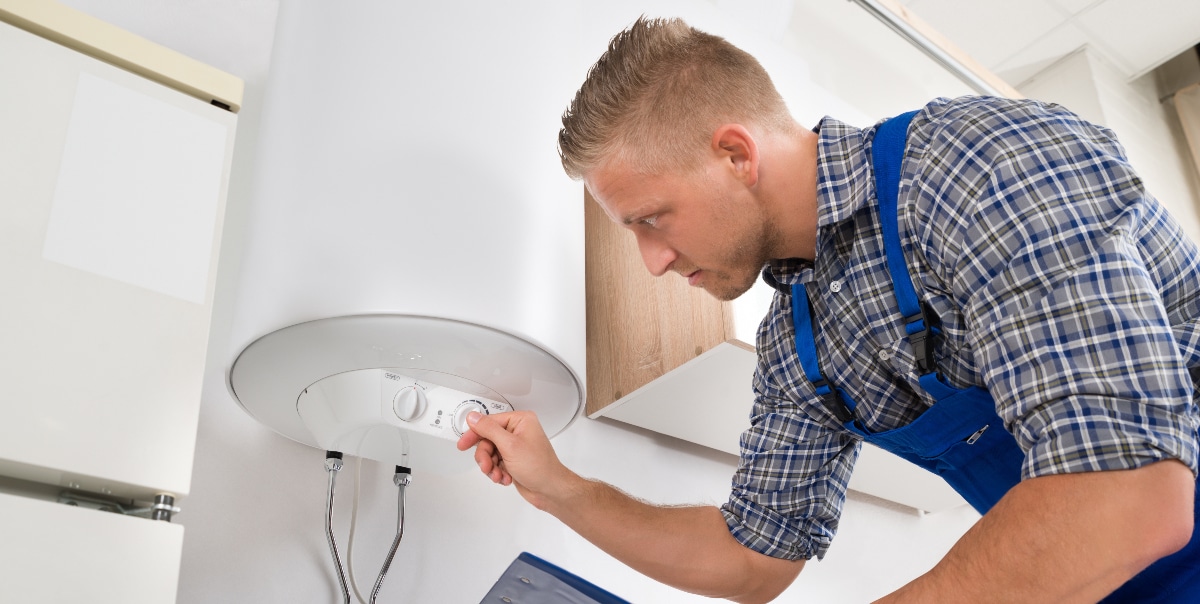Important Care Tips for Your Home's Hot Water SystemSteps to Prolong the Lifespan of Your Home's Hot Water System Through Maintenance
Important Care Tips for Your Home's Hot Water SystemSteps to Prolong the Lifespan of Your Home's Hot Water System Through Maintenance
Blog Article
The publisher is making a few good annotation on the subject of Tips on Maintaining a Water Heater as a whole in this post beneath.

Hot water is essential for everyday comfort, whether it's for a refreshing shower or washing dishes. To ensure your warm water system runs successfully and lasts much longer, regular maintenance is essential. This short article supplies sensible pointers and insights on how to preserve your home's hot water system to stay clear of disturbances and pricey fixings.
Intro
Maintaining your home's hot water system might seem challenging, however with a few simple actions, you can guarantee it runs smoothly for years to come. This overview covers every little thing from recognizing your warm water system to do it yourself upkeep pointers and knowing when to call in professional help.
Importance of Keeping Your Warm Water System
Routine maintenance not just expands the life expectancy of your warm water system yet likewise ensures it runs effectively. Neglecting upkeep can cause reduced efficiency, greater energy bills, and also early failure of the system.
Indicators Your Warm Water System Needs Upkeep
Understanding when your hot water system requires interest can protect against significant problems. Watch out for signs such as inconsistent water temperature level, unusual noises from the heater, or rustic water.
Understanding Your Warm Water System
Before diving right into maintenance jobs, it's valuable to recognize the standard elements of your hot water system. Normally, this includes the hot water heater itself, pipes, anode poles, and temperature controls.
Month-to-month Maintenance Tasks
Routine monthly checks can aid catch minor concerns before they rise.
Flushing the Hot Water Heater
Flushing your water heater eliminates debris buildup, boosting efficiency and lengthening its life.
Monitoring and Replacing Anode Rods
Anode rods prevent rust inside the container. Examining and changing them when worn out is critical.
Examining and Readjusting Temperature Settings
Readjusting the temperature setups ensures ideal efficiency and safety.
Do It Yourself Tips for Upkeep
You can carry out a number of maintenance tasks on your own to maintain your hot water system in top condition.
Looking for Leaks
Frequently check pipelines and connections for leaks, as these can bring about water damage and higher costs.
Testing Pressure Relief Valves
Checking the stress safety valve ensures it works appropriately and prevents too much pressure accumulation.
Shielding Pipelines
Insulating hot water pipelines lowers warmth loss and can conserve power.
When to Call a Professional
While DIY upkeep is useful, some problems call for expert experience.
Complex Issues Needing Expert Aid
Instances include significant leakages, electric problems, or if your hot water heater is continually underperforming.
Routine Expert Upkeep Benefits
Specialist maintenance can consist of detailed inspections, tune-ups, and ensuring compliance with safety standards.
Conclusion
Regular maintenance of your home's warm water system is important for effectiveness, long life, and price financial savings. By adhering to these tips and understanding when to look for specialist aid, you can ensure a dependable supply of hot water without unexpected disruptions.
Water Heater Maintenance: The Basics
Maintaining your water heater will ensure it operates efficiently and has a longer lifespan. Neglecting regular maintenance can lead to costly repairs and an even bigger chunk of your savings if you have to replace it sooner than necessary. But there’s good news: Most water heater maintenance tasks are relatively simple and easy for homeowners with basic DIY skills.
Flush the Water Heater
Over time, sediment and minerals can build up in the tank, reducing its efficiency and potentially causing damage. To flush the tank, turn off the power or gas supply, attach a hose to the drain valve near the bottom and open the valve to drain the water until it runs clear. Ideally, flush the tank annually.
Replace the Anode Rod
The anode rod is a sacrificial metal rod that helps prevent corrosion inside the tank. Inspect and replace it every three to five years or per the manufacturer's recommendation. To replace the anode rod, turn off the power or gas supply, drain a few gallons of water from the tank, unscrew the old rod and replace it with a new one. If the anode rod is significantly corroded or covered in calcium buildup, it's a sign the water heater may need to be replaced soon.
Tune-Up
A yearly tune-up can help identify potential issues and ensure your water heater operates at peak efficiency. This typically involves checking the thermostat, burner assembly (for gas heaters) and any other components specified by the manufacturer. During a tune-up, the technician may also clean the burner and adjust the pilot light (for gas heaters) or examine the heating elements (for electric heaters).
How to Maintain Your Water Heater
Insulate the tank. Insulating the tank can improve energy efficiency and reduce heat loss, saving you money on energy bills. You can purchase precut insulation blankets designed specifically for water heaters or use standard fiberglass insulation wrapped securely around the tank. Check the temperature. The recommended water temperature for most households is around 120 degrees Fahrenheit (49 degrees Celsius). Higher temperatures can increase energy costs and potentially cause scalding. Use a kitchen thermometer to check the temperature at the faucet nearest the water heater. Monitor water pressure. Excessive water pressure can strain the water heater and cause leaks or even tank failure. Install a pressure-reducing valve if necessary. The ideal water pressure range is between 60 and 70 PSI (pounds per square inch). Test the temperature and pressure (T&P) relief valve. The T&P relief valve is a safety feature that releases pressure if the tank gets too hot or the pressure builds up too high. Test it annually by lifting the lever and allowing a small amount of water to release. Replace the valve if it doesn't release water or reseal properly. Check for leaks. Regularly inspect the tank, pipes and fittings for leaks or corrosion. Deal with issues promptly to prevent further damage. Even a small leak can lead to significant water damage over time. Consider a tankless water heater. If your traditional tank-style water heater is nearing the end of its lifespan ( typically 10 years), consider replacing it with a tankless water heater. These units heat water on demand, reducing standby energy losses and potentially saving you money on your energy bills. Schedule professional maintenance. While homeowners can perform many water heater maintenance tasks, it's still a good idea to schedule professional maintenance every few years. A plumber or HVAC technician can thoroughly inspect the unit, identify potential issues and ensure it operates safely and efficiently. https://www.homeserve.com/en-us/blog/home-improvement/hot-water-heater-maintanence/

As a keen reader on What Kind of Maintenance Do Water Heaters Need?, I assumed sharing that piece of content was beneficial. Are you aware of anybody else who is excited by the subject? Why not promote it. Bless you for your time. Come back soon.
Click Here Report this page